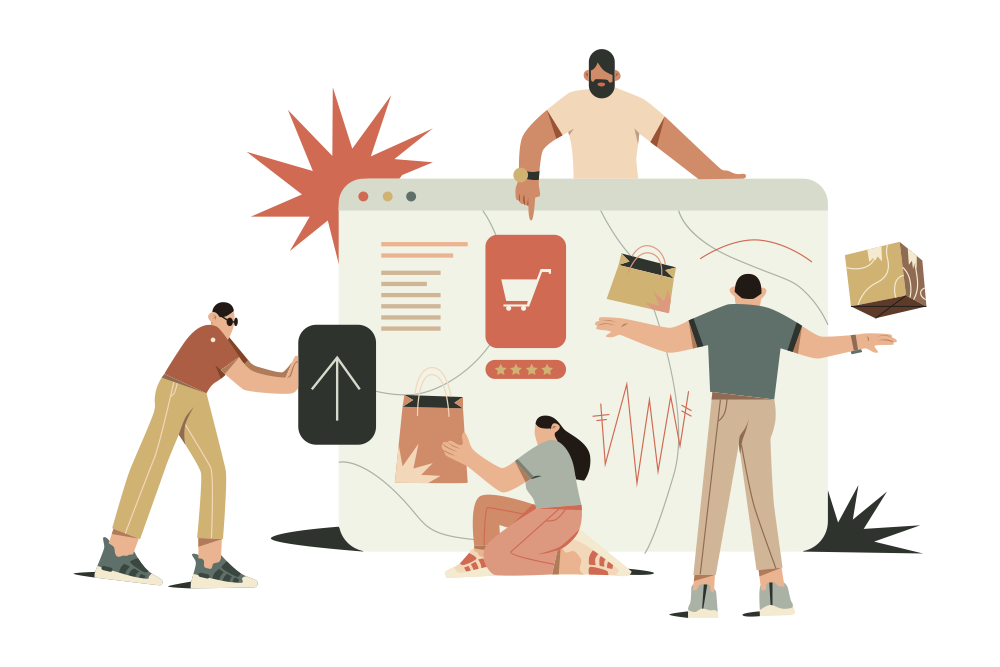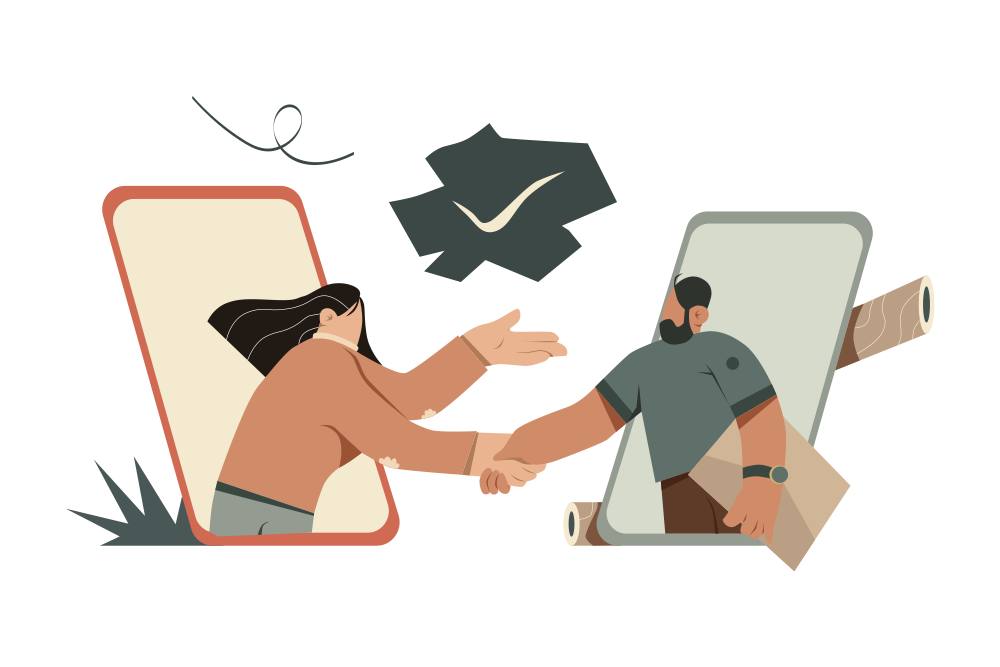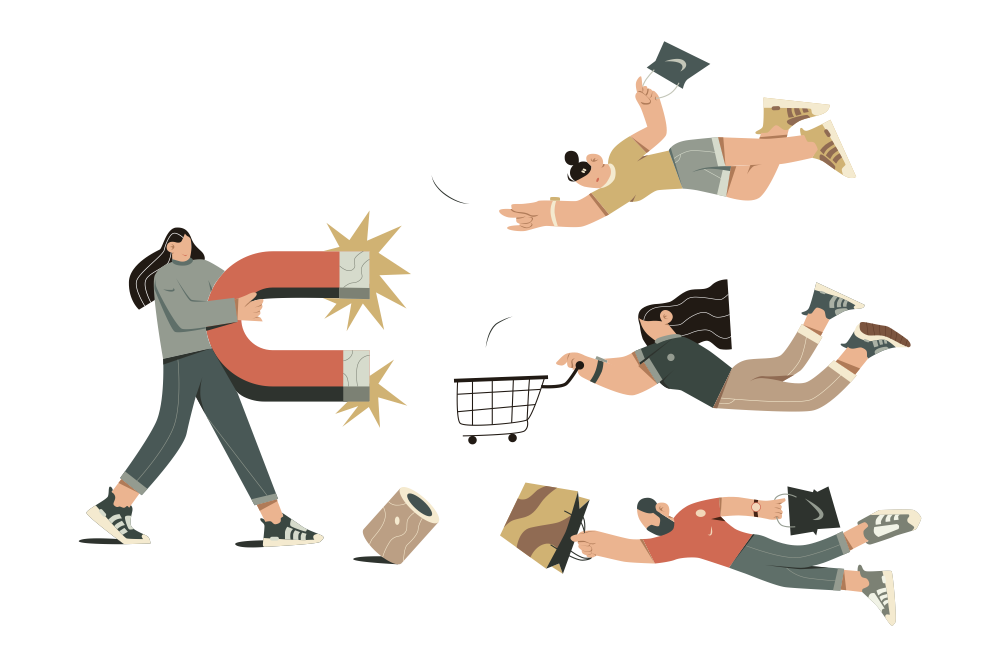
Introducing new pricing for Helpmonks
Discover Helpmonks' new pricing structure, featuring a flexible PRO plan, a FREE plan for smaller teams, and an exciting affiliate program. Experience unparalleled email management solutions today!
Read nowToday's fast-paced world has businesses evolving by the second. They must conform to a new model when it comes to customer service. Understanding customers is the key element of success for business owners
Customers today have higher expectations of businesses than a few years ago. The technology provided by a Customer Engagement Platform (CEP) has enhanced the consumer experience.
Consumers want to contact you as soon as possible. They want to report issues and challenges they're facing. Today that means not having to wait to speak with a representative.
Business today must be omnichannel. Customers expect prompt, individualized service and meaningful marketing. They also want thoughtful recommendations whenever they interact with a business.
Most important, they want options. People communicate in various ways, and businesses should provide those options. Whether it's a call center, email, social media, live chats, or an app doesn't matter.
Provide options that help customers connect on their terms.
A CEP is a company's most effective software tool. It allows you to manage intricate customer relationships.
Continue reading to learn more about what is a customer engagement platform and why your company needs one.
A customer engagement platform enables interactions with customers and prospects. It's a single piece of software that tracks and manages data. It's used with chatbots, email, direct messaging, and other customer interaction tools.
Look at a CEP as a command center. You can access all communication channels and commitment devices from a central location. Use them as the foundation for automated customer service tools and omnichannel work processes.
The best part is that you can activate and manage these workflows without leaving the platform.
A CEP combines communication, Customer Relationship Management (CRM), and help desk functions. There are three primary reasons to incorporate a CEP into your company. Let's look at what you should consider when investing in a platform.
One goal is consolidating and controlling all customer interactions in a single location. By doing so, multiple teams have quick access to important data. It also reduces the need to place customers on hold while a different department is contacted.
Your teams should be able to communicate faster with customers. They do this via various channels from a single platform. Communicating quicker and easier is vital. Using voice, email, messenger, or chat features, is helpful.
Plus, it lets you communicate with consumers on their terms.
Learn from and analyze customer behavior to enhance customer experience. CEPs provide data that are instrumental to your success.
Customer satisfaction, engagement, and retention all have greater benefits with a comprehensive CEP. It should also boost your bottom line.

You might be wondering if there is a difference between a customer engagement platform and a customer relationship manager. Yes is the short answer. Both are tools designed to help businesses effectively address consumer needs.
The software approaches client data differently with real-time customer engagement.
CRMs are often viewed as platforms for interacting with customers. A company can combine its customer engagement tools with customer support software using a CRM. Software for marketing automation and social media management are among the tools.
By combining assets, the company ensures that all employees have access to a single source of customer data. It makes it possible for customers to have more individualized experiences. Additionally, teams save time by not switching between various software and systems.
A CRM focuses on customer interactions.
For example, if running an auto-mechanic business, customers only call when they need routine maintenance. Or if they need an emergency repair. For this business model, you want a CEP that sends the following communications:
You may also want to create an app that allows the customer to see their maintenance history. The app could feature an appointment booking app, paying online for services, or tips on car maintenance.
A business that offers a product might take a different approach. In this example, let's use a retailer as the business model.
It's become commonplace for businesses to capture email addresses on their customer's first visit. Emails are valuable tools, but so are social media handles.
These two pieces of information allow you to send the following communications::
These interactions are multi-faceted and based on the level of operations within your company. It will also depend on how engaged a company needs to be with its customers.
Depending on the complexity of the business relationship, customer experience platforms become more sophisticated. Companies can modify the customer's experience based on data from the CRM. You can offer the opportunity to create help desk tickets or request callbacks to eliminate wait times.
Here are examples of how CEPs can shape customer interactions:
Choosing the right CEP is three-fold. Select the most suitable one for users by understanding the user journey. Two, become aware of every stage at which users interact with your team. Three, be aware of their goals for these interactions.
Companies modify the customer experience. Depending on the complexity of the business relationship, customer experience platforms become more sophisticated. To eliminate wait times, offer the opportunity to create help desk tickets or request callbacks.
Organizations can tweak involvement in additional perplexing activities. Subsequently, stop advertising messages for clients with open help tickets.
Organizations that need to develop client connections further can pursue a strong examination of commitment programming to:
These steps make it simple for a business to check the viability of a client's commitment. Know what stage you're at and when to take client connections further.
Gain perspective by gathering data from each organization’s divergent frameworks. When a business has client information in one spot, the client's journey becomes clear regarding developing their experience. Client commitment programming likewise gives a business a comprehensive perspective on its clients.

Now, let's dig deeper into the nine examples that can shape the engagement you're working to achieve. Remember, real-time customer engagement is measured by the accuracy of your team’s tools. Capturing the right data improves those results.
A/B testing has several benefits. You can create content with more effect using A/B testing to do the following:
An effective strategy for increasing user engagement requires A/B testing. A/B testing helps you make changes to your content that increase engagement. It improves website content and marketing materials. You can then analyze the test results to guide future decisions.
A good example involves testing headers for email marketing campaigns. The results will show which heading garnered the most opens. It's surprising how much of an impact such a small change can have on engagement.
After running the A/B test, you can decide which heading works best and use it to push the campaign out to all subscribers.
Numerous situations call for the use of A/B testing. A/B testing becomes necessary for user engagement, onboarding, modals, and in-product experiences. Teams can use this tool to create new customer experiences. Your teams will also benefit from the knowledge gained.
The variations improve user experiences by updating elements. Still, it's only effective when goals are established, and scenarios are tested. The best part is that they are simple to implement and have huge benefits.
A CEP has to include analytics. Otherwise, you're operating in the dark. Over time you'll hit a wall if you cannot analyze the results of your efforts.
You can make decisions based on data when you access customer journey analytics. Analytical data documents what efforts are effective and what isn't connecting with clients. It also shows how customers interact with your company across multiple channels.
The following user data should be easy to track with a good customer engagement platform:
Tracking user experience is essential to get the right data for analytics. Over time analytics reveals information that will help you create the best customer experience.
Behavioral messaging entails delivering relevant and user-centric content to your users immediately. It follows specific actions that trigger specific events in your SaaS. For successful automation, you must align your messaging with the user's actions in your app or website.
Ensure your customer engagement platform supports behavioral messaging and contextual communication. Make messaging relevant to your customer's experience and ensure contextual and specific communication. Last, ensure your messages’ timing aligns with the consumer's behavior.
Your customer engagement platform must support the channels and functions you want to support. You need to understand all the touch-points in your customer journey clearly. Plus, your objectives for comprehending the necessary channels and functionality.
We've heard the adage that a jack of all trades is a master of none. Think of this when considering the channels and functionality of your customer engagement platform. It's possible that a one-size-fits-all platform isn't right for your company.
Trying to do everything with one piece of software doesn't always succeed. Instead, select a platform with seamless integration into your technology stack and supports one or two channels.
For example, you should use an email automation program if your company needs email automation. Companies looking to interact with site visitors need a chatbot. At the same time, in-app onboarding tools will assist with personalizing that experience.
Your product, marketing, and support teams should be able to own the best customer engagement platform fully. Ensuring the platform doesn't require the operation of an engineering team is the only way to accomplish this.
The best platforms don't require coding to set up. They allow for code-free customization and product experience deployment.
The platform's learning curve is crucial. Your team needs to become familiar with the platform as soon as possible. It must be quick for individuals with little experience to reach engagement. The experience of the customer suffers if it takes too long.
Always remember how much work and time it will take for your team to get up to speed. You want them to be able to set up, deploy, or modify product experiences faster. At this point, they can master the customer engagement platform in less time.

Regarding email marketing, it's easy to fall into the trap of believing personalization is a way to include a customer's name in each email or message. Personalization goes far beyond that quick hack.
Communication that is tailored to a user's requirements and preferences is called personalization. It segments your users according to what they want to do. Subsequently, personalization assists customers with accomplishing their intended tasks.
There are several significant advantages to personalizing your interactions with customers. When you address your customer by name, you can address their requirements and capture their attention. This simple step encourages more active use of your product. It increases their engagement to ensure that the appropriate metrics are being tracked.
Your interactions with customers generate vast amounts of data. They reveal granular information about customer segments and individual clients. You can use this data to improve your interactions with individual customers and groups of customers by using personalization.
You can also get the most out of digital data with personalized customer engagement.
Customer engagement platforms use segmentation to improve customer interactions. The process includes categorizing and grouping customers according to shared characteristics. The process is known as customer segmentation.
The procedure simplifies adapting your sales, service, and marketing strategies toward particular groups. The outcome has the potential to increase both conversions and customer loyalty.
Segmentation involves much more than classifying your customers. You can understand what they require. Tailor content to each group's specific requirements and challenges.
Also, determine how to create ads and campaigns aimed at specific groups with more potential for conversion.
Customer segmentation also has other common advantages. It motivates companies to place more effort into customer support and service. The process assists internal teams in preparing for challenges that various groups might face.
Utilizing preferred channels or platforms to communicate with specific customer segments increases success. With that success, you create an advantage with new products and services.
Today, companies provide online customer support. It allows clients to bypass a company representative. Tools that form customer self-service include:
AI technology has improved how consumers interact with businesses. Conversation agents (chatbots) can guide customers to the answers they need.
Providing a positive customer experience necessitates offering self-service applications. Your website becomes a self-service customer service portal. Customers now expect a self-service application before speaking to a representative.
Many people look for answers via:
They do this before speaking to a customer service representative. Forty percent of customers now prefer self-service to personal interaction.
Today, customers handle issues with a product or service differently. They don't want to add to their frustration by speaking to a rep. Now they find the answers online.
A knowledge base, how-to video, or FAQ article, become great assets.
Businesses have implemented self-service solutions in response to consumer feedback. If the customer finds the self-service portal difficult to navigate, they won't utilize it. It's important to have the following tools for the customer self-service portal:
Self-service customer tools provide helpful content when done correctly. It creates a better experience for customers that prefer getting information on their terms. Over time, a self-service portal can help reduce customer support costs.
Make certain that all components of your technology stack are in constant communication. Understand that a variety of user interactions across various channels can yield data.
You do not want this data to break up. Customers become dissatisfied as a result.
Imagine if a customer had to explain themselves multiple times to get the desired results. They had to speak with different team members in different departments. Yet, no one provided consistent information.
Your client would be dissatisfied and rethink their commitment to your company.
A well-integrated customer engagement platform enhances the proper utilization of data across multiple channels. Third-party apps would reduce confusion or friction.
It's best to have proper integrations with your analytics platform, CRM, or email/chat support platform. When using a product adoption platform, it's essential to do it correctly.
Choosing the right customer engagement platform involves taking the information we've provided and applying it to your business needs. There might be a single piece of software that includes everything you need. Numerous businesses offer dynamic offerings that include tools and functionality for customer relationship management.
To achieve your objectives for customer engagement, you may need to combine two or more tools, depending on your requirements. Before looking into your options, determine which options to request.
Every business needs a customer engagement platform. The question is whether you're looking for one solution or multiple solutions. Before investing in software, define which features you need first.
We've discussed the importance of understanding the solutions that will benefit your company. You might require a solution or set of solutions that integrate with your existing CRM. Maybe you want to enable self-service support and provide assistance across multiple channels.
You can introduce a loyalty program. Allow customers to co-browse websites during sales or support interactions.
Co-browsing is collaborative. It lets two people browse a website and interact with the page simultaneously. Agents can see what the customer sees.
It's safe because the agent can't see anything else on the customer's device.
Co-browsing software for sales and support is a great tool. Combine with a solid customer engagement platform to orchestrate the customer journey.
We gave you a great outline of features for your customer engagement platform. Based on your use case, determine what features are must-haves.
Next, narrow your choices to the platforms that provide them.
Remember that not all features will be important to you on an equal scale.
In addition to those features already mentioned, you also want to consider a few management tools. These tools to consider include:
The centralized user management system reduces the operational complexities of managing user accounts and server requests. Your teams will better manage user requests. The CAM also reduces risks and enhances application and online server security.
Most businesses rely on customer retention to increase revenue. The process of identifying customers who are at risk and implementing proactive strategies to keep them is known as churn management. Churn management strategies are recommended for all businesses utilizing SaaS platforms.
Churn management comes in two forms, customer and revenue loss. Customer loss is the number of users who have stopped using the service. Revenue loss demonstrates the financial losses caused by downgrades or lost customers.
A variety of reasons can occur to drive customer churn. Poor customer service, a lack of product-market fit, and a poor product experience are the most common causes.
Churn analysis involves three essential steps. Conduct surveys to comprehend the causes, followed by Net Promoter Score (NPS) surveys. Analyze user sentiment data by performing funnel analytics to comprehend where users drop off.
A feedback management system is a set of procedures that assists you in collecting, tracking, and responding to customer feedback. You can solicit feedback, collect it in one location, and then analyze it to discover insights with a reliable feedback management system. After that, you should act on your feedback and use it to make decisions about the product.
You conduct ongoing market research by collecting feedback from customers. It gives you the information to build high-impact features and make good product decisions.
Learn why customers decide to move forward with an offering or pass on the opportunity. With the information, work towards increasing engagement.
There are numerous ways to utilize customer feedback in development. There are many good reasons to get feedback from customers and use it. The ultimate goal is to get comprehensive responses to your customers’ needs.

The omnichannel communications experience entails integrating multiple channels. The goal is to connect with customers to provide a seamless experience across all channels.
The customer experience is always easy and seamless regardless of the channel. A company can market and sell to customers in various ways with an omnichannel strategy. Here are some examples:
A multi-channel approach to a marketing strategy can incorporate an omnichannel experience. The system aims to standardize and unify the company's approach to customers and messaging. A business might, for instance, provide support or sales via email, text, or phone.
Omnichannel communications are ideal for businesses interacting with customers minute-by-minute. Customer satisfaction and personalization advantages will increase sales. It will also improve favorable reviews for businesses prioritizing marketing, sales, and communications.
This system benefits eCommerce businesses and retail establishments. It can also be used by ISPs, medical aid providers, and any other business that wants to make communication with customers easier.
The process by which your company interacts with its audience on social media is called "social media community management." It pertains to your social media accounts in most cases. It can also apply to other profiles you monitor, such as those of influencers or pages related to your industry.
Social media marketing tools to promote your brand. The tools that make it simple to view, organize, and prioritize all incoming communications and conversations. They are often necessary for effective community management.
Social media community management begins with establishing the brand and customer relationship.
The brand must employ a strategy to expand to attract potential customers and increase conversions. Next, you want to engage the audience within its owned social space.
Your company's return on investment (ROI) will rise if you manage a self-sustaining community. The strategy pays off when you build on existing relationships and build new connections.
Leading marketers agree that personalization is one of the most important factors determining business success. Customers expect brands to provide them with personalized experiences based on their preferences.
It's easy to see why personalization is so important in light of these statistics. Your customer engagement platform’s level of customer segmentation will determine the degree to which you can personalize the customer experience.
Personalization utilizes the customer segmentation feature that we discussed earlier.
It is essential to ensure that your customer engagement platform seamlessly integrates with your existing software ecosystem. You will use it in conjunction with several other tools. If it does not, it could hinder productivity and cause data inconsistencies.
Examine the platform's existing integrations and research to determine whether users have positive experiences with the necessary integrations.
Study the channels clients use for engagement with your brand. Next, list the channels you would like to add to your platform. Determine if there are duplicates or better upgrades. The main channels to consider include:
This process simplifies implementing an omnichannel customer engagement strategy. Ideally, your customer engagement platform will centralize all communication channels. It will allow you to manage and track all customer communication from a single location.
Customer engagement software offers various levels of automation. Decide which processes you want to automate and what remains a manual process.
Think about these things when deciding on automation.
What manual customer engagement activities can your team automate? Customer behavior initiates automation, so you must know what triggers create the behavior. Next, figure out if it's possible to automate follow-up actions.
Customer engagement platforms with many features are great but should also be easy to use. Depending on the circumstances, finding a simple solution to set up and use may be more important than some features.
Determine if the software is user-friendly. Schedule a demonstration and sign up for a free trial. Find out how helpful the support team is by reading reviews and asking around.
During the onboarding process, inquire about the level of training provided. Also, inquire about the level of support that follows the onboarding process.
Be sure to get feedback from those who will use the platform the most. Can your team use this immediately, or will they have to undergo training?
Most importantly, is the software worth the effort based on your research?
We understand there's much to consider when deciding on a customer engagement platform. The customer experience will improve when you make the right choice. It will assist you in improving your customer relationships, adding value, and increasing sales.
Let Help Monks assist you with selecting the right tools to improve customer interactions. Schedule a demo TODAY!

Discover Helpmonks' new pricing structure, featuring a flexible PRO plan, a FREE plan for smaller teams, and an exciting affiliate program. Experience unparalleled email management solutions today!
Read now
Dynamic email signatures increase brand visibility, build brand identity, and boost conversions. Learn how to create and update dynamic email signatures.
Read now
Looking for an email marketing automation software? This guide shows what to look for. We'll also review the best tools for your online marketing needs.
Read now
Using customer engagement solutions helps you keep your existing customer base and grow. Here are the top 10 customer engagement solutions for your business.
Read now
Empower your team and delight your customers.
